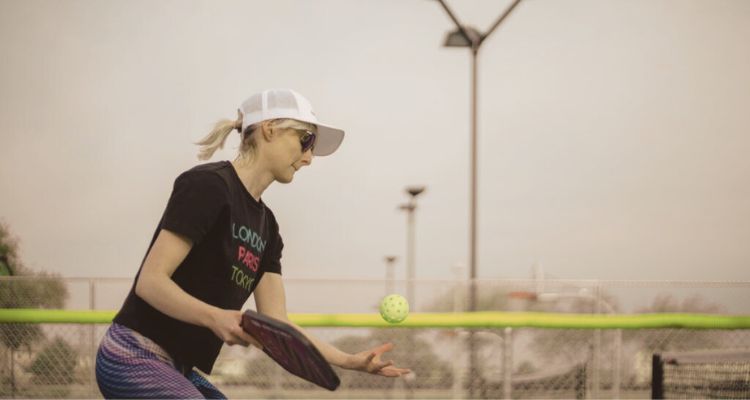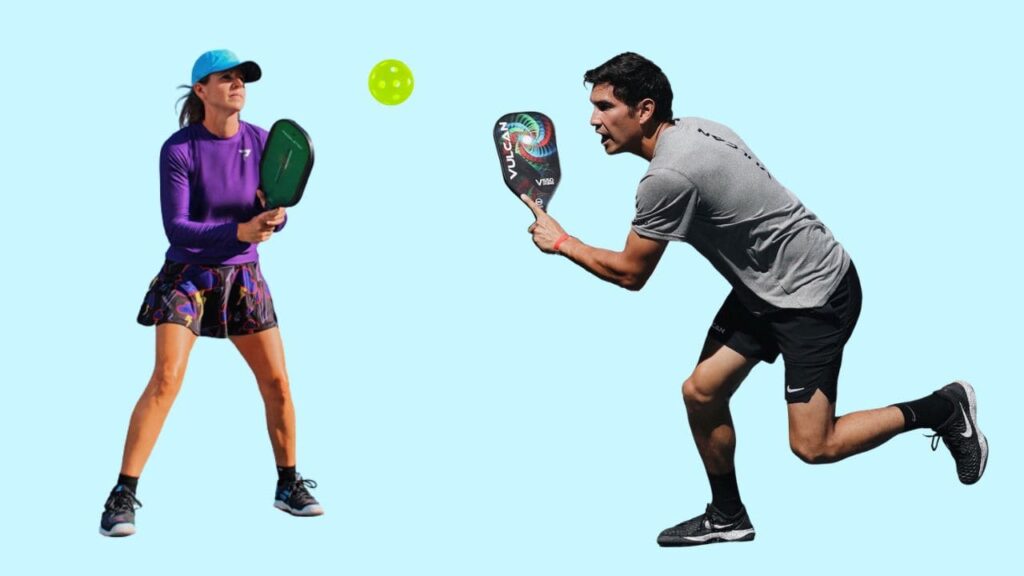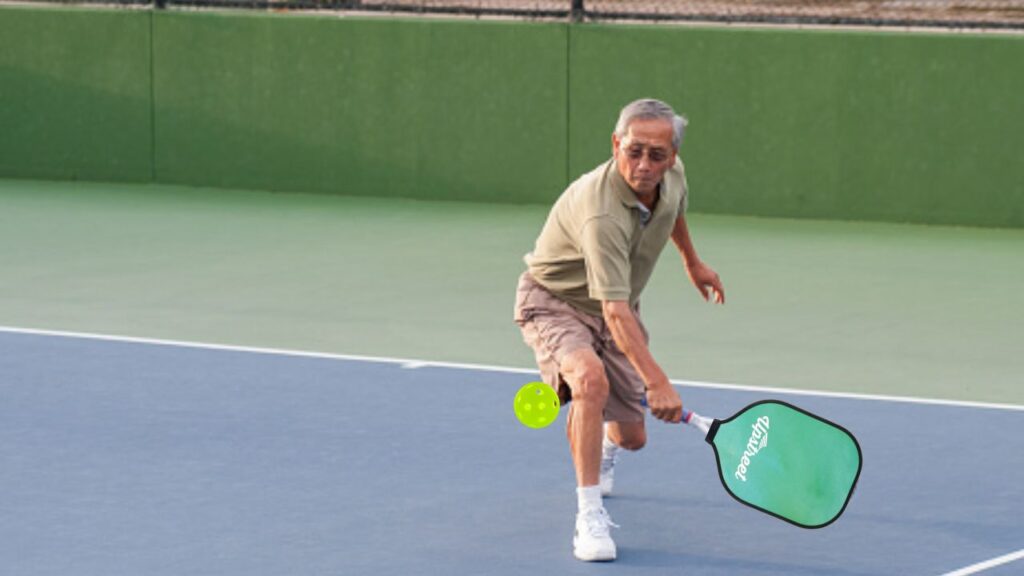Are you a pickleball enthusiast looking to improve your skills on the court? Cross-training might be the missing piece in your training regimen. Not only do cross-training exercises help prevent injuries, but they can also enhance your overall performance and take your game to the next level.
This blog post will explore why cross-training is essential for pickleball players and provide some exercises and tips for creating an effective cross-training plan. So grab your racket, and let’s get started!
Importance of Cross-Training in Pickleball
Cross-training helps players develop the skills necessary to succeed on the court by providing them with new perspectives and techniques they can use while playing pickleball. For example, it allows them to practice different types of shots from different angles and learn how to move around the court more effectively to gain an advantage over their opponents.

Additionally, cross-training allows players to improve their physical fitness levels, which can help increase endurance and reduce fatigue during games. Cross-training also teaches players how to think strategically during matches by allowing them time away from pickleball drills and practices so that they can analyze different aspects of the game, such as shot selection, positioning tactics, etc. This type of analysis not only helps enhance decision-making abilities but also improves performance overall as well.
Cross-Training Exercises for Pickleball Players
As the pickleball sport mainly focuses on developing skills in pickleball, players need to consider cross-training exercises to increase overall fitness and sports performance. Cross-training exercises can help build strength and endurance, improve agility, reduce injury risk, and enhance general gameplay.
Cardiovascular Endurance
Cardiovascular endurance is an essential component of cross-training for pickleball players. Cardio exercises such as running, swimming, biking, and rowing can all be included in a cross-training routine to increase the player’s cardiovascular endurance. This exercise strengthens the heart and lungs while improving the player’s fitness.
Additionally, it can help burn calories more efficiently, leading to greater success on the court. Other cardio exercises beneficial for pickleball players include high-intensity interval training (HIIT) and circuit training. These exercises improve cardiovascular endurance and enhance muscular strength and power. Pickleball players looking to improve their cardiovascular endurance should incorporate cross-training into their routine to maximize their performance on the court.
Strength Exercise
Strength exercise is a vital part of cross-training for pickleball players. It helps build muscle, increases power and endurance, and improves overall performance on the court.
Strength training can be done with weights or bodyweight exercises, which enhance strength and prevent injury. Examples of strength exercises include squats, lunges, pushups, and pull-ups. These exercises target specific muscle groups needed in pickleball. Additionally, incorporating resistance bands into your routine can effectively add variety to your workouts while still strengthening your muscles. Furthermore, stability ball exercises such as planks and crunches can strengthen core muscles essential for strong pickleball shots.
Flexibility and Balance
Flexibility and balance are essential to any successful pickleball player’s exercise regimen. Cross-training exercises can improve both of these areas, resulting in greater performance on the court.

Static stretching is one type of cross-training exercise focused on flexibility and balance. This type of stretching involves holding a stretch for a certain period to increase flexibility, range of motion, and reduce muscle soreness. A different kind of dynamic stretching utilizes active movements such as lunges or leg swings to warm up muscles before playing pickleball.
Balance exercises are also crucial for improving coordination, agility, and stability while playing the game; some examples include single-leg balancing drills or using a stability ball while performing squats or single-leg raises.
Agility
Agility is an essential cross-training exercise for pickleball players, as it improves their speed and coordination. In agility drills, players change directions quickly to react quickly to incoming shots. It can help pickleball players move faster and more efficiently on the court. Examples of agility drills include ladders, cones, and jumping jacks. These exercises also help develop balance and stability on the court, which allows for returning difficult shots. Additionally, agility exercises can strengthen the leg muscles used while playing pickleball, such as the quadriceps and hamstrings. To maximize the benefits of these exercises, it is recommended that they be done regularly three times a week, for at least 10 minutes each time.
Reaction Time
Reaction time is an essential skill for pickleball players to hone, and one of the effective ways to work on it is through cross-training exercises. A great way to improve reaction time in pickleball is by doing activities that require rapid decision-making and quick responses.
Cross-training exercises such as sprints, agility drills, plyometrics, and balance drills help pickleball players become more responsive on the court. These types of drills also build strength, endurance, and coordination, which can improve a player’s overall game. Additionally, reaction time benefits from specific skill sets such as hand-eye coordination and anticipation – both developed through practicing with a partner or working with a coach.
Tips to Create a Cross-Train Plan

Cross-training is an effective way to stay active and improve your pickleball skills. Cross-training can help you develop strength, endurance, and agility while reducing the risk of injury. To create a cross-training plan for pickleball, here are some tips to get you started:
- Identify Your Goals: Before creating your cross-train plan, you must identify what you want to achieve regarding fitness and pickleball skills. Consider strength training, agility drills, or running for endurance.
- Set Realistic Expectations: It’s essential to set realistic expectations when creating your cross-train plan. Ensure that the activities are manageable about the time commitment and intensity level so you can handle the process.
- Make a Schedule: Once you have identified goals and set realistic expectations, it’s time to make a schedule for yourself that will ensure success in achieving those goals over time. Schedule weekly practices in which all activities are combined into one session or split up into multiple sessions throughout the week depending on availability/time constraints, etc.
- Find an Accountability Partner: Having someone who can keep you accountable is essential when trying any new activity/skill. It can motivate individuals and help them stay on track with their plans despite any distractions they may face!
- Track Progress Regularly: Tracking progress periodically is essential when engaging in physical activity. It helps people stay motivated by seeing how far they have come since starting their journey! It could include tracking how long it takes each week during practice sessions or tracking weight loss/body composition if that’s something they’re looking at achieving through their cross-training program!
Here is an example of cross-training workout routine:
| Day | Daily Routine | What It Focuses On |
|---|---|---|
| Monday | Cycling or Spin Class | Cardiovascular Endurance and Leg Strength |
| Tuesday | Strength Training | Upper and Lower Body Strength and Endurance |
| Wednesday | Pickleball Practice or Game | Skill Development and Match Play |
| Thursday | Swimming or Water Aerobics | Low-Impact Cardiovascular Endurance and Upper Body Strength |
| Friday | Yoga or Pilates | Flexibility, Balance, and Core Strength |
| Saturday | Pickleball Drills | Skill Development, Footwork, and Shot Selection |
| Sunday | Rest Day | Relax and Recovery |
FAQs
The right way to physically train for pickleball is by incorporating a combination of exercises that target the major muscle groups used in the sport. Specific activities could include squats, lunges, and plyometrics to strengthen the lower body; shoulder presses, lateral raises, and bent-over rows to build upper-body strength; and core exercises such as plank holds or mountain climbers. Cardiovascular activities like running or cycling can improve endurance for playing longer matches.
To strengthen your knees for pickleball, you can do exercises such as squats, lunges, step-ups, and calf raises. Additionally, flexibility exercises like stretching and yoga can improve your joints’ range of motion. It is also essential to build muscle strength around the knee joint by doing leg extensions and leg curls. Lastly, using a foam roller to roll out tight muscles can reduce pain and tension.
No, you must not be in good shape to play pickleball. Pickleball is a low-impact sport that people of all fitness levels can enjoy.
Wrap Up!
Cross-training is a great way to get in shape and become a better pickleball player. It can help you build strength, agility, and endurance while also helping you prevent injuries. With proper planning and dedication to your workouts, cross-training can effectively take your pickleball game to the next level.
So don’t hesitate – start cross-training today!












